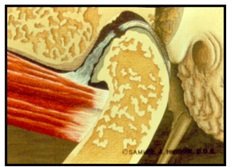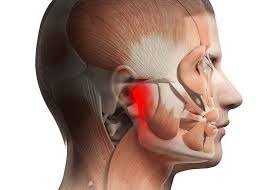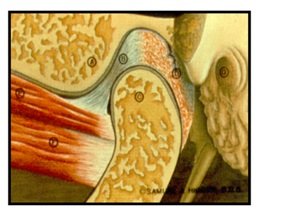
Orofacial Pain
Causes for Orofacial pain which have to be ruled out;
Orofacial pain is the Pain felt in the face and mouth

- Tooth Decay: Cavities can cause pain in the affected tooth and surrounding areas.
- Gum Disease (Periodontitis): Inflammation and infection of the gums can cause pain.
- Tooth Sensitivity: Can occur due to enamel erosion or gum recession.
- Tooth Abscess: An infection at the root of a tooth can cause severe pain.
- Bruxism: Grinding or clenching teeth can lead to muscle pain and discomfort.
- TMJ Dysfunction: Pain and dysfunction in the temporomandibular joint, which connects the jawbone to the skull.
- Jaw Alignment Issues: Problems with the alignment of the jaw can cause pain.
- Sinus Infections: Inflammation of the sinuses can cause facial pain, especially around the eyes, cheeks, and forehead.
- Migraines: Often involve pain in the face or around the eyes.
- Cluster Headaches: Intense pain typically focused around one eye.
- Tension Headaches: Can cause general facial and head discomfort.
- Trigeminal Neuralgia: A chronic pain condition affecting the trigeminal nerve, which can cause sharp, shooting pain in the face.
- Postherpetic Neuralgia: Pain following an outbreak of shingles that affects the facial nerves
Other causes: Fibromyalgia, Psychological factors such as stress and anxiety.
TMJ Pain
Temporomandibular Disorders include both Masticatory Muscle Disorders and Temporomandibular Joint Disorders

Masticatory Muscle Disorders
- Myofascial Pain (pain with localized tenderness)
- Myositis (pain with generalized tenderness)
- Contracture (chronic limited opening)
- Muscle Spasm (acute limited opening)
Temporomandibular Joint Disorders
- Arthralgia (pain and tenderness)
- Disc Disorder (clicking and locking)
- Arthritis (pain with degeneration)
- Arthrosis (degeneration)
Normal Temporomandibular Joint
- Articular Eminence
- Intra-articular Disk
- Mandibular Condyle
- Posterior Attachment
- Superior Lateral Pterygoid Muscle
- Inferior Lateral Pterygoid Muscle
- Internal Auditory Meatus

TMJ Disk Disorder- with reduction (I, II)
- Reciprocal clicking that is reduced with anterior positioning of jaw
- Stage II includes intermittent locking
- Range of motion is normal
- With or without pain or tenderness (arthralgia)

TMJ Disk Displacement- without reduction (III, IV)
- Locked with limited opening due to disk interference
- Stage IV disk pushed forward and opens over time
- Mouth opening deviation to side of lock
- With or without pain or joint tenderness (arthralgia)

TMJ Disk Degenerative Joint Disease (V)
• Coarse crepitus or grating noises on opening
• Range of motion can be normal
• With or without pain and arthralgia

Myofascial Pain
A repetitive strain injury of the muscles associated with regional pain and localized
tender spots in muscle, tendon, or fascia that reproduces pain.
Muscle involved in TMJ pain: Deep Masseter, Anterior Temporalis, Splenius Capitis
Most common Risk factors for developing Chronic jaw pain
- Opening too wide or for too long during dental visits and tooth extraction.
- Motor vehicle accidents including whiplash injuries, direct blows to the jaw, and clenching of the jaw before, during and after the impact.
- Sports injury
Treatments that are used for Temporomandibular disorders and number of clinical trials showing some efficacy.
- Splints and occlusal treatments
- Stabilization (hard and soft), repositioning and anterior splints, occlusal adjustment, restorative dentistry, and functional orthodontic splints
- Physical medicine and exercise
- PT modalities, exercise including stretching, posture, conditioning
- Therapeutic Injections and acupuncture
- Trigger point injections, Botox injections, TMJ joint injections, acupuncture
- Psychological therapies; Cognitive-behavioral treatment, Biofeedback, Relaxation
- Pharmacologic therapy (Oral medications)
 +91 8248827895 |
+91 8248827895 |  absolutevitalhealth@gmail.com
absolutevitalhealth@gmail.com
 Joint Pain
Joint Pain